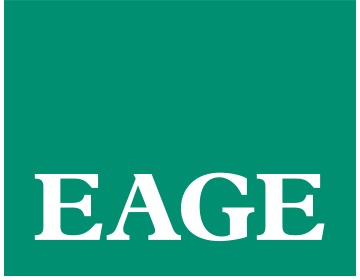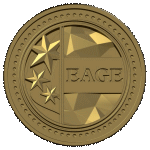Welcome to the latest newsletter prepared by the EAGE A.I. Committee this year. As a group of EAGE members and volunteers they help you navigate the digital world and find the bits that are most relevant to geoscientists.
You are welcome to join EAGE or renew your membership to support the work of the EAGE A.I. Community and access all the benefits offered by the Association.
EAGE Membership Benefits: Join or Renew
Curious to know all EAGE is doing for the digital transformation?
Visit the EAGE Digitalization Hub
![]()
Committee note: This month’s newsletter is a little different in that we are summarizing our key machine learning and artificial intelligence takeaways from the EAGE Annual Conference and Exhibition, held in Madrid in June. We hope you find some interesting reflections and links to technical contributions that we as a committee felt were important to share. As a committee we help put on data science related events at EAGE Annual and if you are interested in helping us we do have a seat open.
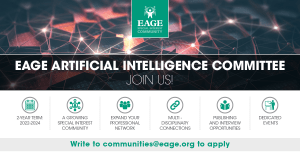
EAGE Annual Hackathon – Explainable AI
Summary by Ashley Russell
![]() What: As a pre-conference workshop the AI committee organized a hybrid hackathon for students and non-students alike. We chose a very important theme-explainability in AI. Three teams hacked on this theme, looking at how do we “open” up machine learning models and demonstrate how they are behaving in a way that us as geoscientists can understand. All three teams did an excellent job in this hybrid hack (both in person and online).
What: As a pre-conference workshop the AI committee organized a hybrid hackathon for students and non-students alike. We chose a very important theme-explainability in AI. Three teams hacked on this theme, looking at how do we “open” up machine learning models and demonstrate how they are behaving in a way that us as geoscientists can understand. All three teams did an excellent job in this hybrid hack (both in person and online).
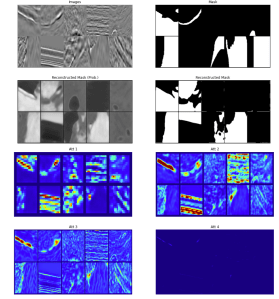 The winning team (by panel of judges) looked at the SaltNet model that was created in a past Kaggle competition by TGS to predict salt or not salt in seismic data. The team looked at how they could expose how the model was making that decision by using the Attention algorithm. At 4 different layers in the network they put in an “attention gate” where they could show images of what the ML at that layer was looking at in the seismic – the edge of the salt, the body of the salt..or something else? You can follow their entire notebook and results here on Github.
The winning team (by panel of judges) looked at the SaltNet model that was created in a past Kaggle competition by TGS to predict salt or not salt in seismic data. The team looked at how they could expose how the model was making that decision by using the Attention algorithm. At 4 different layers in the network they put in an “attention gate” where they could show images of what the ML at that layer was looking at in the seismic – the edge of the salt, the body of the salt..or something else? You can follow their entire notebook and results here on Github.
![]() Why this is useful: Having a hackathon is a great way to network, explore technical ideas in new ways, and improve communication and competence around data science. Additionally all the work from all three teams is available on github open sourced, so you are welcome to take a look at the team’s code and use it for your own work.
Why this is useful: Having a hackathon is a great way to network, explore technical ideas in new ways, and improve communication and competence around data science. Additionally all the work from all three teams is available on github open sourced, so you are welcome to take a look at the team’s code and use it for your own work.
Check out the github repositories for all three teams here.
Image source: https://github.com/EAGE-Annual-Hackathon/SnorIAX/blob/main/AttensionSaltNet/SaltNet.ipynb
![]()
EAGE Annual Special AI Session
Summary by: Lukas Mosser and Jan van de Mortel
![]() What: The EAGE AI Committee organised a dedicated session with the theme “AI in Geoscience and Geophysics: Current Trends and Future Prospects”.
What: The EAGE AI Committee organised a dedicated session with the theme “AI in Geoscience and Geophysics: Current Trends and Future Prospects”.
A number of speakers across industry and academia were invited to present the latest research and trends from their organisations and research groups. Attendance was incredibly high, with the gorgeous bubble dome assigned to the session filled to the last seat, even causing many to have to stand behind the seats and in the entrance.
The session featured excellent contributions covering applied machine learning and the challenges of deploying AI solutions. A particular example was a presentation showing the application of advanced probabilistic Machine Learning (Normalizing Flows) on uncertainty aware seismic imaging by Seismic Laboratory for Imaging and Modeling (SLIM, Georgia Inst of Technology) that caught the attention of many.
The presentations were complemented by thoughtful and excellent discussions during the session and also thereafter throughout the conference.
Finally, attendees of the session were impressed by a presentation of one of the hackathon teams from KAUST university who presented their project, which consisted of testing more than one Machine Learning methodology including a GAN.
Many thanks to the speakers, organizers, and the EAGE for making it possible to host this dedicated session.
![]() Why this is useful: The technical contributions gave insight into cutting-edge research in the field of physics-informed neural networks and the use of high-fidelity synthetic data in combination with real datasets.
Why this is useful: The technical contributions gave insight into cutting-edge research in the field of physics-informed neural networks and the use of high-fidelity synthetic data in combination with real datasets.
![]()
EAGE Annual Valuable Presentation #1: “Deep Learning Applications for Wind Farm Site Characterization” – Dr. Haibin Di, Schlumberger
Summary by: Ashley Russell
![]()
What: This talk was one of the invited talks to the Dedicated Session on AI in Geoscience and Geophysics (no abstract available). The data science in the talk itself is nothing new – taking well log data and depth converted seismic, creating a supervised ML model between the two to relate well log values to seismic trace values, and then use this mathematical model to predict the well log responses across all traces of the seismic. The difference here is in the application – moving out of oil and gas application to shallow seismic for wind farm site analysis. Haibin demonstrated that the method does transfer and had a very nice dataset to work with which is helpful. But it was the Q&A on this talk that gathered some attention.
It is hard to tell in the images, but the shallow seismic is not of the best quality – it was pointed out in the Q&A that there were multiples, noise, and generally problems in the seismic that traditionally we would process away. So the question asked was simple – why didn’t you process the seismic before moving into the ML application?
The answer: there isn’t enough funding in this project to process seismic. (offshore wind).
![]() Why this is useful: We have to think about cost in everything moving to renewables, including seismic acquisition and processing. This is also a huge opportunity for the application of AI-based denoising and other machine-learning based processing methods where automation can help to reduce costs.
Why this is useful: We have to think about cost in everything moving to renewables, including seismic acquisition and processing. This is also a huge opportunity for the application of AI-based denoising and other machine-learning based processing methods where automation can help to reduce costs.
![]()
EAGE Annual Valuable Presentation #2: “Statistical Analysis Methods for Well Placement” – M. Ismael, Saudi Aramco
Summary by: Ashley Russell
![]() What: This talk from Saudi Aramco looked at comparing traditional numerical methods to unsupervised clustering algorithms plus regression to create the best well placements for targets coming from a sweetspot map (filtered grid cells). They benchmarked two common clustering algorithms, k-means and DBSCAN, against their traditional numerical method, by both comparing the amount of simulated production and the run time it took to calculate the landing paths. Could the unsupervised ML plus regression to pass paths through the best cells create better target paths? The answer was yes – more oil production and more standardized well paths were created through this statistical process. And it was significantly faster in calculation time.
What: This talk from Saudi Aramco looked at comparing traditional numerical methods to unsupervised clustering algorithms plus regression to create the best well placements for targets coming from a sweetspot map (filtered grid cells). They benchmarked two common clustering algorithms, k-means and DBSCAN, against their traditional numerical method, by both comparing the amount of simulated production and the run time it took to calculate the landing paths. Could the unsupervised ML plus regression to pass paths through the best cells create better target paths? The answer was yes – more oil production and more standardized well paths were created through this statistical process. And it was significantly faster in calculation time. 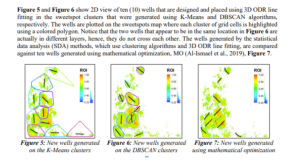
![]() Why this is useful: This presentation showed that well-thought out applications of relatively simple machine learning can make large impacts to workflows by utilizing more relationships found in data than a human can control. This particular application is also useful as it combines the above-ground commercial aspect into the subsurface – the number of clusters has to satisfy both the subsurface and the top-side business requirements.
Why this is useful: This presentation showed that well-thought out applications of relatively simple machine learning can make large impacts to workflows by utilizing more relationships found in data than a human can control. This particular application is also useful as it combines the above-ground commercial aspect into the subsurface – the number of clusters has to satisfy both the subsurface and the top-side business requirements.
EAGE Members can access the abstract here.
Image Source: Conference Proceedings, 83rd EAGE Annual Conference & Exhibition, Jun 2022, Volume 2022, p.1 – 5
![]()
A Few Reflections on the EAGE Annual Meeting
Summary by: Oleg Ovcharenko
![]() What: Self-supervised and physics-informed deep learning methods were also in the spotlight this year. The former benefiting from extraction of the general knowledge from large unlabeled datasets while the latter methods blend the first principles physics into the data-driven learning.
What: Self-supervised and physics-informed deep learning methods were also in the spotlight this year. The former benefiting from extraction of the general knowledge from large unlabeled datasets while the latter methods blend the first principles physics into the data-driven learning.
Aside from the excellent talks in the AI dedicated session I would also highlight interesting works proposing the attempts for self-supervised multiple elimination, noise suppression and a set of other downstream tasks. There were also quite a few great works focusing on physics-informed learning, DAS data handling and CCUS cases.
The hackathon was also a success. The three teams explored the landscape of explainable AI in application to GANs, graphs and some foundational neural network architectures. All the final slide decks and source codes are available on GitHub so everyone can have a look (see above!)
![]()
Discover EAGE Learning Resources on A.I. and machine learning
Sixth EAGE High Performance Computing Workshop
This newsletter is edited by the EAGE A.I. Committee.
| Name | Company / Institution | Country |
|---|---|---|
| Anna Dubovik | WAIW | United Arab Emirates |
| Jan H. van de Mortel | Independent | Netherlands |
| Jing Sun | TU Delft | Netherlands |
| Julio Cárdenas | Géolithe | France |
| George Ghon | Capgemini | Norway |
| Lukas Mosser | Aker BP | Norway |
| Oleg Ovcharenko | NVIDIA | United Arab Emirates |
| Nicole Grobys | DGMK | Germany |
| Roderick Perez | OMV | Austria |
| Surender Manral | Schlumberger | Norway |
| Yohanes Nuwara | Aker BP | Norway |
